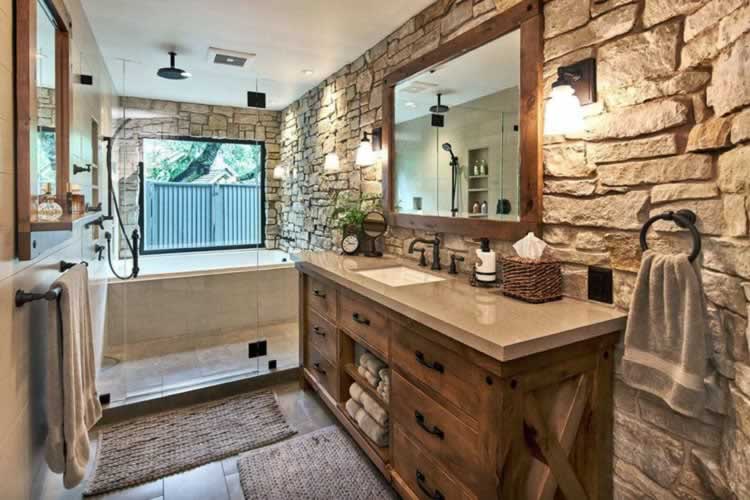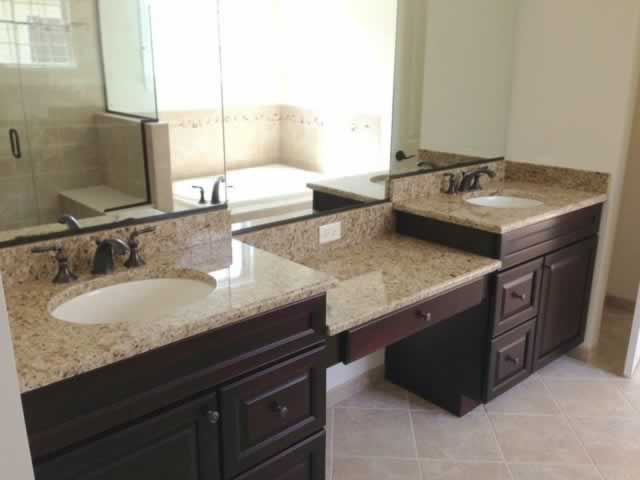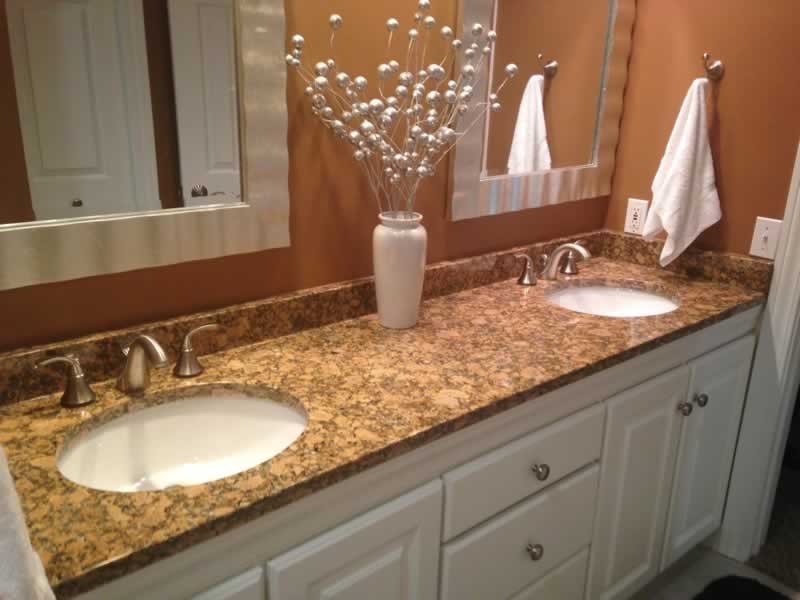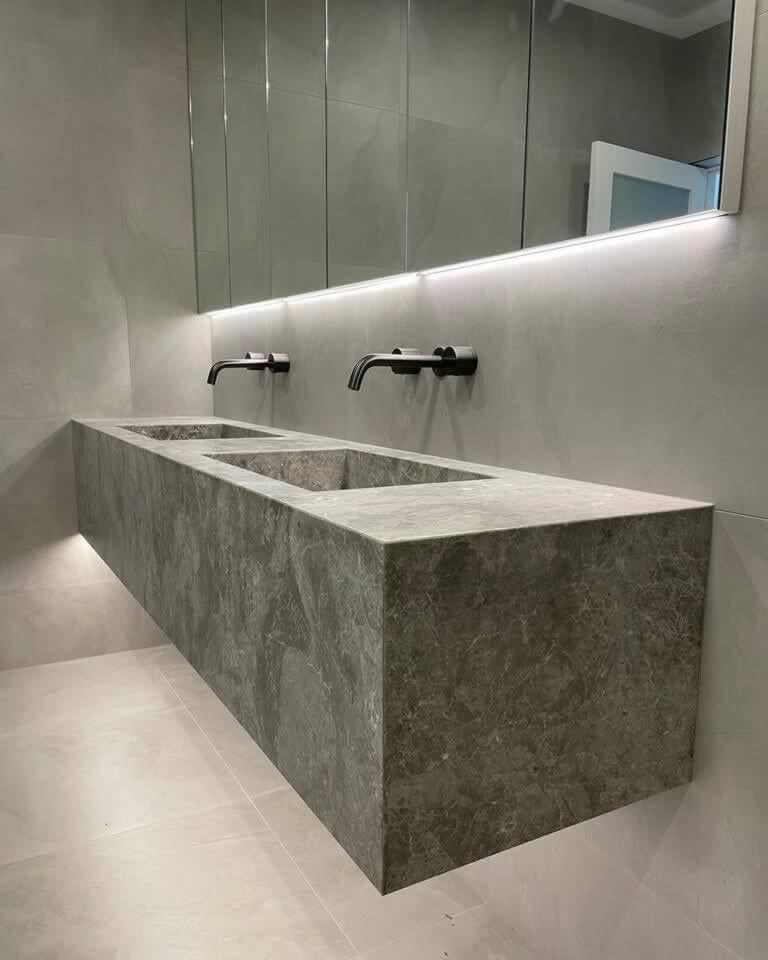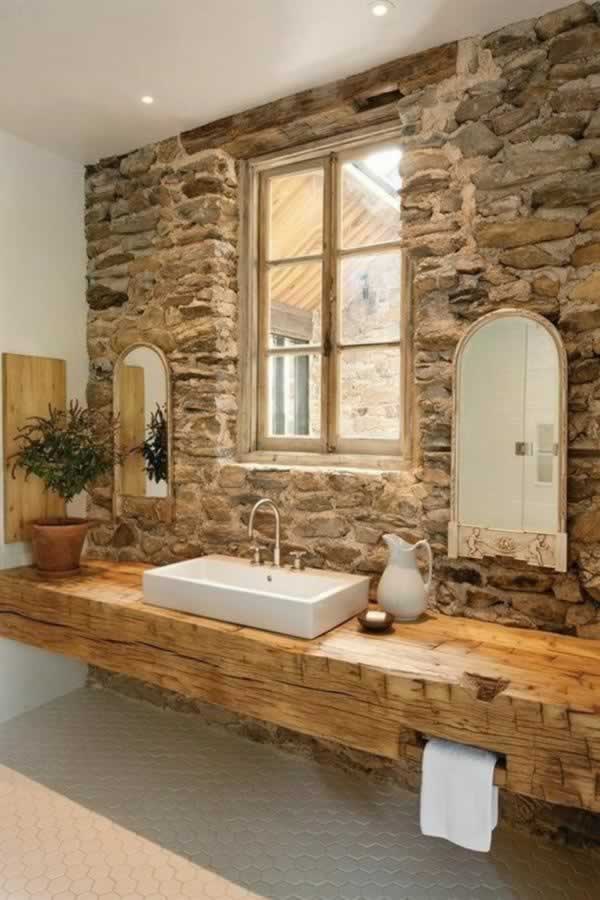When choosing natural stone for the bathroom, the following aspects need to be considered:
Stone Type
- Marble: It has a beautiful texture and a high - end look. However, it is relatively soft and prone to scratches and stains. It is suitable for areas with low water contact and low usage frequency in the bathroom, such as the countertop of the washbasin.
- Granite: It is very hard, wear - resistant, and has good stain - resistance. It is suitable for various parts of the bathroom, including countertops, floors, and walls.
- Slate: It has a unique matte texture and good water - resistance. It is often used for bathroom floors and walls, which can create a rustic and natural atmosphere.
Color and Texture
- Color: Choose colors that match the overall style and color scheme of the bathroom. Light - colored stones such as white and beige can make the bathroom look more spacious and bright, while dark - colored stones such as black and gray can create a sense of luxury and stability.
- Texture: Consider the texture of the stone. Some stones have a smooth and delicate texture, while others have a rough and textured surface. The choice depends on personal preference and the desired decorative effect. For example, a smooth - textured stone is easier to clean, while a rough - textured stone can add a sense of authenticity and naturalness.
Quality
- Inspect the surface: Check for cracks, pits, and other defects on the surface of the stone. A high - quality natural stone should have a smooth and intact surface without obvious flaws.
- Check the density: The higher the density of the stone, the better its quality. You can knock on the stone to listen to the sound. A clear and crisp sound indicates a high - density stone, while a dull sound may indicate a lower - quality stone.
- Verify the authenticity: Make sure to purchase natural stone from a reliable supplier to avoid buying counterfeit products. You can ask for relevant certificates and test reports to ensure the authenticity and quality of the stone.
Size and Shape
- Size: Consider the size of the bathroom and the specific installation location when choosing the size of the stone. For large - scale bathrooms, larger - sized stones can be used to create a sense of grandeur, while for small - scale bathrooms, smaller - sized stones are more suitable to avoid making the space look cramped.
- Shape: Choose the appropriate shape of the stone according to the installation needs. Common shapes include square, rectangular, and circular. In addition, some special - shaped stones can be used to create unique decorative effects, but they may be more difficult to install.
Maintenance and Cost
- Maintenance: Different types of natural stone require different maintenance methods. For example, marble needs to be sealed regularly to prevent stains, while granite is relatively easy to maintain. Consider your own ability and willingness to maintain when choosing stone to ensure the long - term beauty and service life of the stone.
- Cost: The price of natural stone varies depending on the type, quality, and origin. Set a reasonable budget before choosing stone and choose the product that best suits your needs and economic strength. Do not blindly pursue high - end stones to avoid excessive costs.
